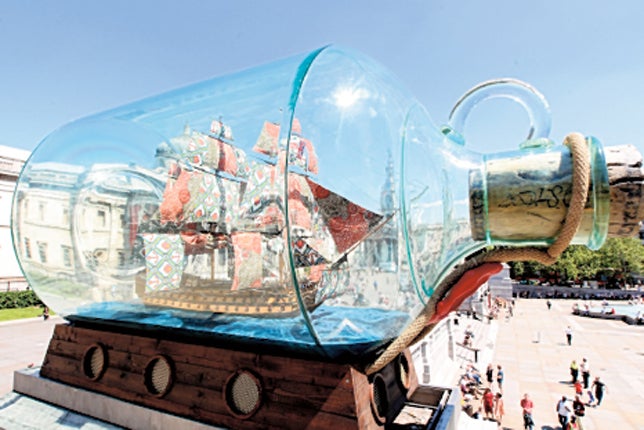The Timeline: HMS Victory

1759-1765
The HMS Victory was ordered by the Navy Board in June 1759. She was designed by Thomas Slade – "perhaps the most capable designer of the 18th century", according to Peter Goodwin, the current keeper and curator of the Victory. Building began in July, and took six years, at a total cost of £63,176 (approximately £8.2m today).
1778-1781
The Victory was held in reserve until France joined the American War of Independence. After her hull was sheathed in copper to increase speed, in 1781 she captured a whole convoy of French ships while under the control of Rear-Admiral Kempenfelt – despite being outnumbered.
1797
In February 1797, she won a decisive battle against a Spanish squadron off Cape St Vincent, Portugal. Horatio Nelson, a Commodore at the time, made the risky decision to leave the line of battle, and managed to prevent two halves of the Spanish squadron from rejoining.
1803-1805
During the Napoleonic Wars, the Victory – with Nelson aboard – set sail for the Mediterranean. For 18 months, Nelson blockaded the French fleet, but in May 1805 they slipped away. Led by Pierre-Charles Villeneuve, they headed to the West Indies to draw the English away from the Channel. Nelson gave chase. When the French fleet returned to Europe, Sir Robert Calder's squadron was defending the Channel, and Nelson was hot on its tail. Villeneuve bolted to Cadiz, and Napoleon's attempt to invade Britain was foiled.
1805
The Victory sailed under Thomas Hardy – again with Nelson on board – to pursue Villeneuve's fleet off southern Spain. In October, at Cape Trafalgar, battle began. Nelson was shot and killed, but the battle was successful, with 17 ships captured and the explosion of another marking a grand finale. "The Victory was armed with 104 guns, and could deliver a broadside weight of about a ton of fire at one go, about every one and a half minutes," explains Goodwin.
1831
Perhaps the Victory's closest shave came in 1831, when it was recommended for disposal. But, at the request of his wife, Hardy refused to sign the warrant.
1922
HMS Victory was moored in her present dock in Portsmouth on 12 January 1922, before being restored to her 1805 glory.
2010
This month, the Victory makes an appearance in Trafalgar Square. The Anglo-Nigerian artist Yinka Shonibare has unveiled his "Ship in a Bottle" on the fourth plinth. A model of the Victory is encased within a bottle – but all 37 sails are made of richly patterned African-style textiles.
Join our commenting forum
Join thought-provoking conversations, follow other Independent readers and see their replies
Comments
Bookmark popover
Removed from bookmarks